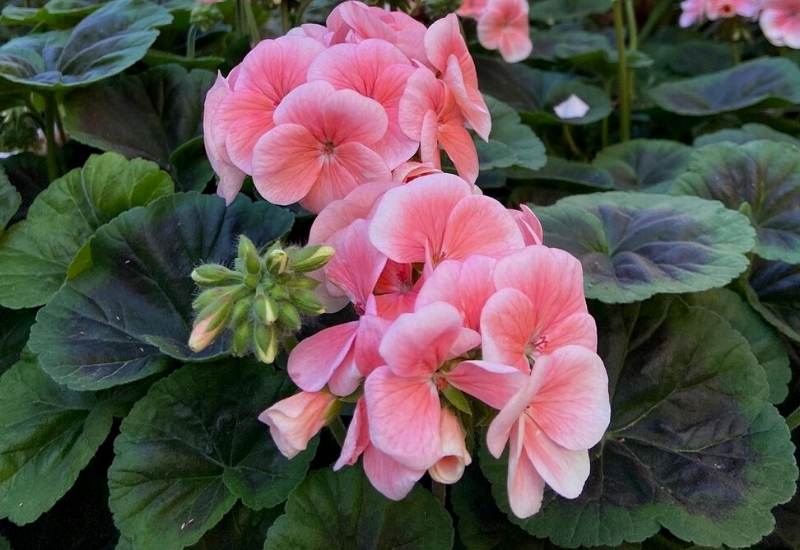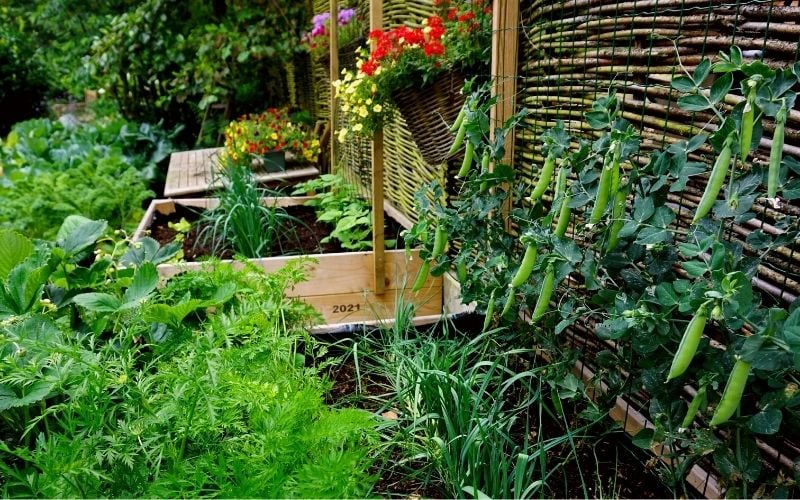
As the July sun blazes down, you often think that planting is done for the year, but July is definitely not too late to plant garden vegetables and ornamentals, in fact the heat of summer can be a great time to sow a new crops as we make the most of the warm weather.
Seeds sown in July will quickly germinate in the warm temperatures, and these late crops are a great way to extend the season and protect the soil from erosion over winter.
In many climates, vegetables and flowers planted in July will grow right through the fall and into winter if you provide them with adequate protection when needed. Even in short-season climates, many direct-sown seeds will flower and bear before the first killing frost and beyond.
From carrots and salad greens to colorful cosmos and pansies, here’s 23 different types of vegetables, herbs and flowers that can be planted in July. But first, here are some tips on a successful summer planting.
Tips For A Successful July Planting
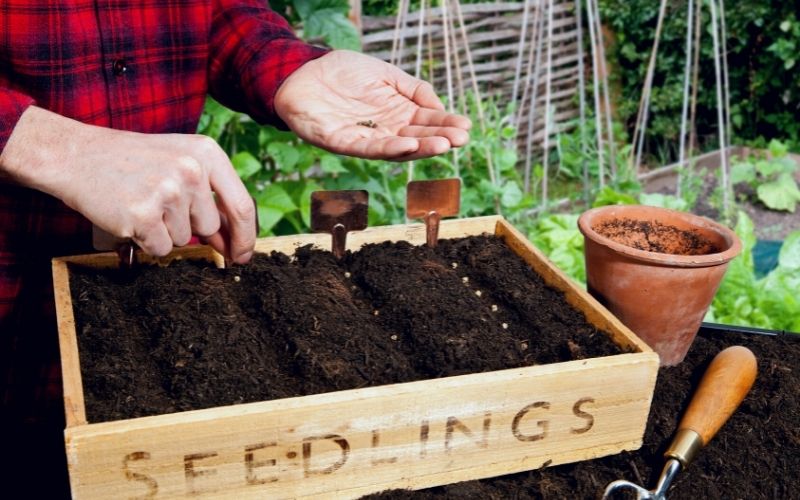
Most of us are used to planting in the early spring and are unprepared to cultivate new seedlings during the summer. Here are a few tips to help you with your July sowing.
Make Sure You Have Enough “Frost Free” Days
The enemy of many gardeners is the dreaded “first frost date” in the fall. When considering vegetables and flowers to plant in July, make sure they will have enough time to grow before the season ends.
To do this, figure the first fall frost date for your area (your local garden centre or ag extension office can help) and then count how many days you have left until this date. Your seed packet will list the “days to maturity” for the variety you want to grow, and if that will grow before the frost then you are good to go.
Be wary of plant whose “days to maturity” starts from the time of transplant as they won’t have enough time to grow when direct sown.
Of course, this greatly depends on where you live. Folks down in California July is a perfect month to plant tomatoes, squash, and all sorts of long-season plants but the summer heat will cause cool-season plants like spinach to bolt.
The farther north you go, you might be limited by the number of growing days you have left, but the cool-season plants will be perfect for your garden. Many crops will tolerate a few frosts and some will even handle snow.
Keep reading to find which vegetables and flowers will work best in your area. Not all of the plants listed in this article will work in every climate (I truly feel for the gardens that battle the elements in the cold northern gardens), but many can give you a satisfying second harvest no matter where you live.
Be Patient As Fall Approaches
After the summer solstice, the days will start getting shorter and the temperatures will start to cool in the coming months.
As your July sown plants grow into the fall and winter, they might take longer to grow than the listed “days to maturity” due to the lack of sunlight and heat.
Water Often
July is often the hottest month of the year, so it is important to regularly water your seeds and seedlings to keep them from drying out.
Once your seeds have emerged, it is best to water right onto the soil rather than on the plant itself and try to water in the early morning or late in the evening so the plant has enough stored water during the heat of the day.
Mulch Plants With Straw
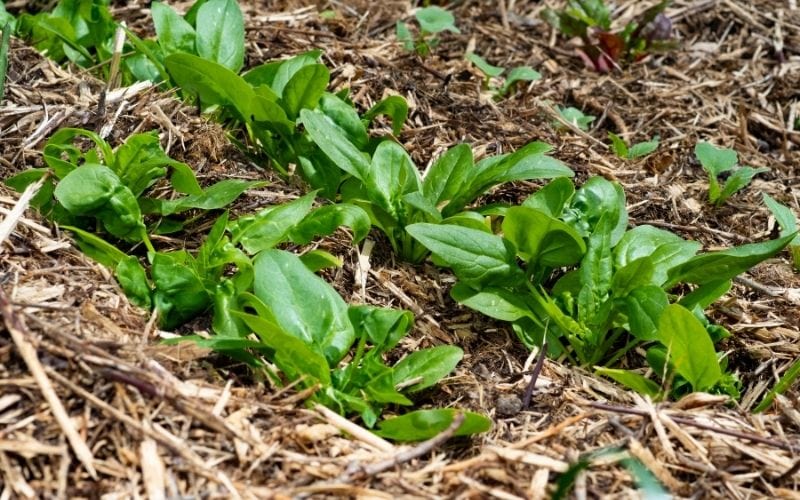
Adding a layer of organic mulch, such as straw, will help store moisture in the soil and keep the seeds and seedlings from drying out.
Mulch will also insulate the soil and protect it from the scorching sun. Many cool season veggies, such as spinach or lettuce will not germinate if the soil is too hot, and a mulch can help keep the soil cool enough for good germination.
Choose Bolt Resistant Varieties
Many of our favorite vegetables, such as spinach, lettuce, and radishes bolt very easily in the heat. When choosing seeds for sowing in July, choose bolt-resistant varieties that handle the heat for better results.
Be Prepared For Season Extension Protection
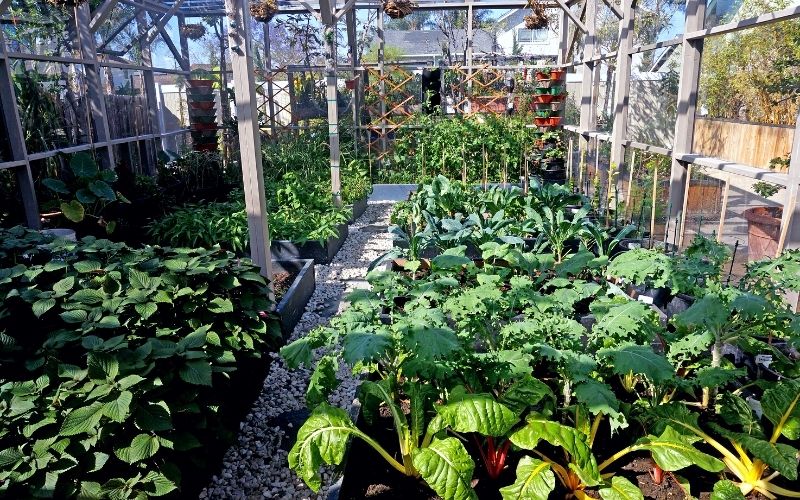
Even though it is hot now, it will probably be quite cool in the fall when you are getting ready to harvest your July-planted veggies. Be prepared to properly protect your plants during the fall and winter. Some good methods include
Maximize Your Garden Space With Summer Succession Planting
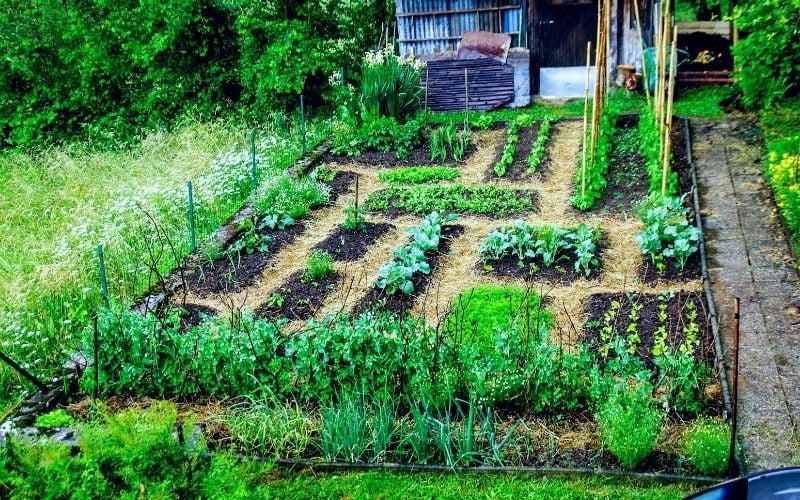
Succession planting is the practice of sowing two or more crops in the same spot. Once the first crop is harvested, plant the second in the same place to maximize your garden space.
Even if you have a large garden and aren’t worried about extra space, succession planting eliminates bare soil that can be impacted by erosion.
July is a great month to plant your second or third crop in your succession plant. Fast-growing crops that were planted in the spring, such as radishes or lettuce, can be harvested and the ground resown with another plant that will grow into the fall.
Here are some pointers for July sown succession plantings:
Don’t Forget The Transplants
While many plants can be grown from seed in July, don’t forget that July is often a great month to put out some transplants. Tomatoes, for example, can do very well when potted out in July, as can cucumbers, peppers, squash, and other heat-loving plants.
Again, keep an eye on how many days you have left until frost as heat-loving plants that thrive in July are also very frost-sensitive.
July is also a great month to pick up some new flowers from the nursery to brighten up the fading blossoms in your garden.
15 Best Vegetables To Plant In July For Late Summer Or Early Fall Harvest
July is the month to look ahead to the fall and plant vegetables that will extend your harvest.
As a northern gardener, I always panic in the spring and try to plant everything as early as possible and often pay the price with poor germination and lower production.
Here are some great vegetables you can grow from seed now in July for late summer or early fall harvest that will work in many gardens around the world.
1. Peas

Peas are the ultimate early crop but they can be planted very successfully in July and will germinate well in the warm soil. July-sown peas will be a welcome treat in the fall. Consider soaking the seeds to give them a start in dry soil.
Sow pea seeds 2cm to 5cm (1-2 inches) deep, and 2 cm to 7cm (1-3 inches) apart. Provide trellising for the vines or light stakes for dwarf varieties.
“Sugar Ann” are a good variety that grows quickly, and “Alaska Pea” is a heritage pea that grows well when the weather starts to cool.
2. Beans

Many bean varieties, especially of the bush type, are quite fast-growing and can be sown successfully in July for a September harvest. Beans are very frost-sensitive, so don’t be set unrealistic expectations if you live in short-season climates.
The optimal soil temperature for bean germination is 21-32°C (70-90°F), making them a perfect choice for July sowing. Space the seeds 7cm to 10cm (3-4 inches) apart and 3.5cm (1½ inches) deep and don’t overwater them.
“Strike”, “Hilda Romano”, and “Gold Rush” are good varieties to try in July.
3. Kohlrabi

Kohlrabi can be grown for microgreens or for the whole vegetable which can be ready in as little as 55 days. Since they prefer cool weather, plant kohlrabi after the middle of July for a fall harvest.
Plant kohlrabi seeds directly in the garden about 5mm (¼ inch) deep and 10cm to 15cm (4-6 inches) apart. The warm weather will help the seeds germinate in about a week.
Kohlrabi will benefit from a good top dress of compost. Floating row covers will help protect them from troublesome insects.
4. Scallions (Green Onions)
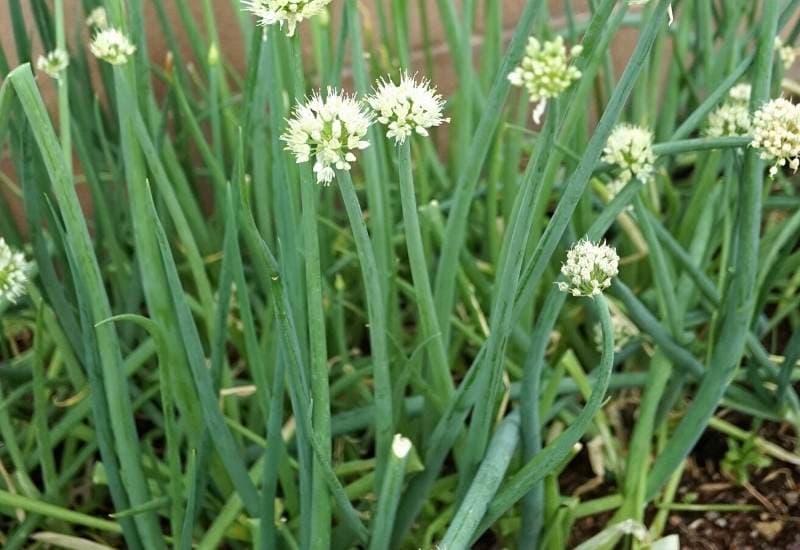
Nothing from the grocery store can beat green onions fresh from the garden. There are many short-season varieties available for fast summer growth, or take advantage of their cold tolerance and grow a longer season variety into the fall and winter.
Many garden sites suggest to grow scallions as a transplant, but we have always had great success with direct sowing. Weed them thoroughly, however, or the tiny delicate seedlings will be quickly choked out.
5. Spinach

Baby spinach can be ready in as little as 35 days, but be mindful of the weather when you plant this very heat-sensitive green in July as overly hot weather will cause it to bolt.
If you are worried about the heat, consider planting New Zealand Spinach, which isn’t a spinach at all but has the same taste paired with a heat-loving nature perfect for July.
When the soil temperature exceeds 20°C (70°F), spinach will have poor germination, so consider waiting for a cooler spell or until the end of the month.
If your July planted spinach doesn’t germinate, don’t worry. The seedlings will pop out of the ground as soon as the weather starts to cool in the fall.
Sow spinach seeds 1cm (1/2 inch) deep and 2.5cm to 8cm (1-3 inches) apart and thin as needed.
6. Chard
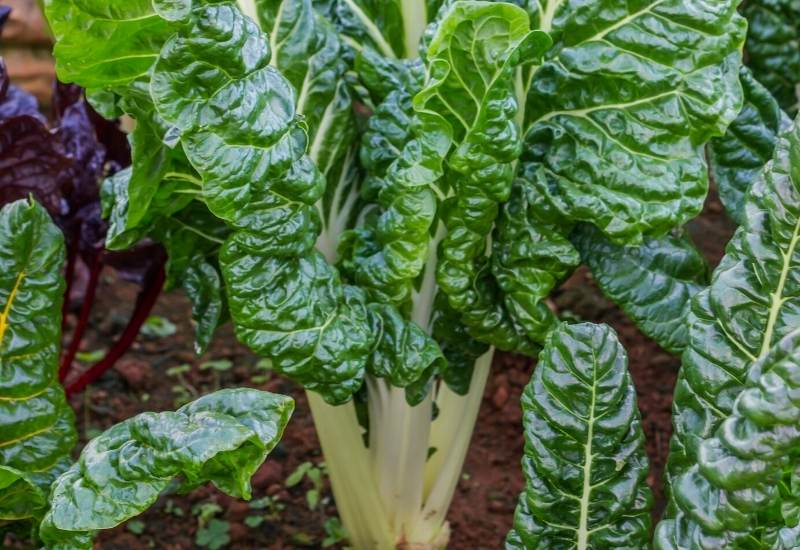
Chard is another cool-season green like spinach, but it will germinate in soils up to 30°C (85°F), making it a good option for July sowing. Chard will survive some frosts and is nearly indestructible in our experience.
July plantings can be continuously harvested throughout the fall and into the winter if your season is mild. Just pick a few leaves as needed and more will come. Space the seeds 10cm to 30cm (4-12 inches) so they will have room to grow nice large leaves.
7. Kale

Another great green for direct seeding in July is Kale. You can pick the leaves as baby greens and the plant will continue to produce, and it will even give you fresh greens from under a blanket of snow.
In our experience, kale is susceptible to aphids and other pesky bugs. If part of succession planting, make sure it is not grown following a related species or you might have an infestation on your hands.
8. Lettuce

Lettuce can be a bit trickier to plant in July since high soil temperatures can inhibit germination, but it can be well worth the effort.
Certain varieties are more heat tolerant or wait until later in the month when a cool spell is in the forecast.
Lettuce is another green that does not germinate in soils warmer than 22°C (72°F). For a July sowing, sprout the seeds by placing them on a damp paper towel in a plastic bag inside the fridge prior to planting, or consider starting them indoors.
Sow multiple plantings every week so hedge against crop failure in the heat, and choose bolt-resistant varieties.
9. Choi
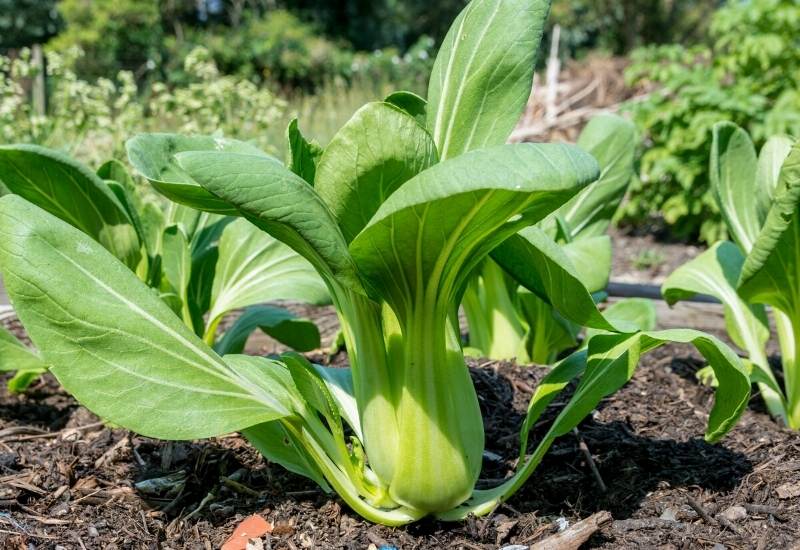
Choi varieties are great to plant in July since any earlier and they are prone to bolting. They will germinate very well in the warm soil and many varieties are ready in 40 to 50 days. Choi will require some protection if an early frost is eminent.
Direct sow seeds 1/2cm to 1cm (¼-½ inch) deep and thin them to 15cm to 20cm (6-12 inches) to grow good sized plants.
10. Beets

July grown beets will make the most of the warm weather for good germination and these hardy root vegetables can stay in the ground through frost and light snow (don’t forget the straw insulation if extreme cold is on the way).
In many climates, your July beets can be harvested from September right through until Christmas.
Soil temperatures over 26°C (80°F) can reduce germination, so don’t let them get too hot when starting out. Don’t forget to eat the greens!
11. Carrots

We often think of carrots as an early crop, but they can be planted right up until the middle of July. Depending on the variety you choose, these will be ready in the fall or they can be over-wintered in the garden for a fresh winter treat. Carrots will get sweeter as they are chill-sweetened by fall frosts.
Even with the warm soil temperatures, carrots can take up to two weeks to germinate. If competing weeds are a problem, consider placing a board over the rows until the seeds have germinated.
Since carrot seeds are delicate and shallowly planted (5mm), water them very carefully to avoid upsetting and displacing the seeds.
12. Rutabaga
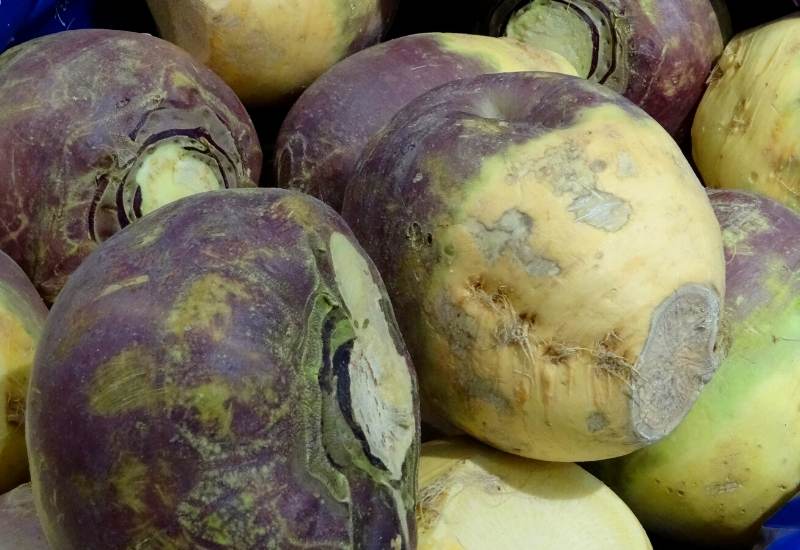
Though rutabagas typically have a longer growing time of around 90 to 100 days, these large root veggies can handle a few light frosts and will actually get sweeter if they do.
Direct sow your rutabaga seeds before July 15th for a late fall or early winter harvest. However, if the soil is too warm (they don’t like it over 21°C), consider waiting until the end of the month and harvest them a little bit smaller.
Prepare the bed by loosening the soil and adding lots of compost and organic matter.
13. Turnips

There are many fast-growing varieties of turnips, and they can be direct sown in July for a late summer or fall harvest. Turnips can handle a few light frosts so some of the longer maturing varieties can be grown into the fall.
Growing turnips in July is similar to Rutabagas and many of the same points apply here as well.
14. Radish
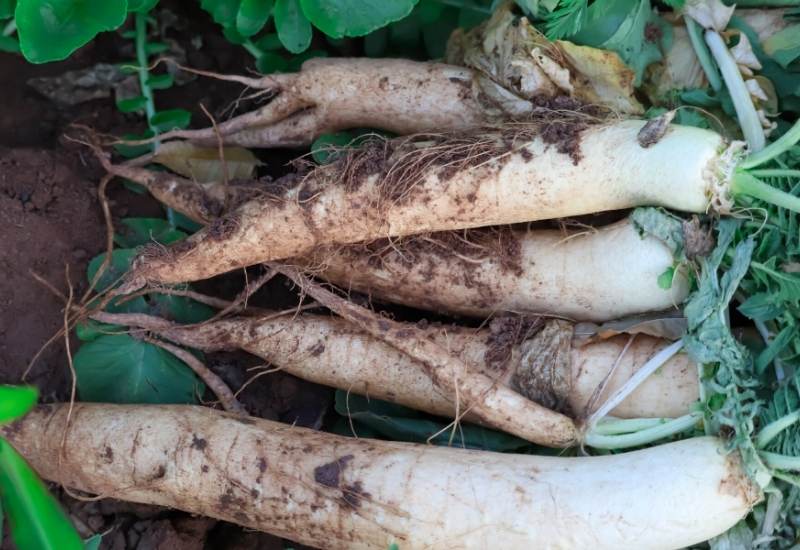
Radishes are a fast-growing root that will give you a quick harvest. They bold easily so might not perform well in really hot years, or wait until the end of the month before planting.
Radish seeds don’t need excessively warm soil to germinate, so consider Daikon radishes as a late summer treat.
15. Cover Crops
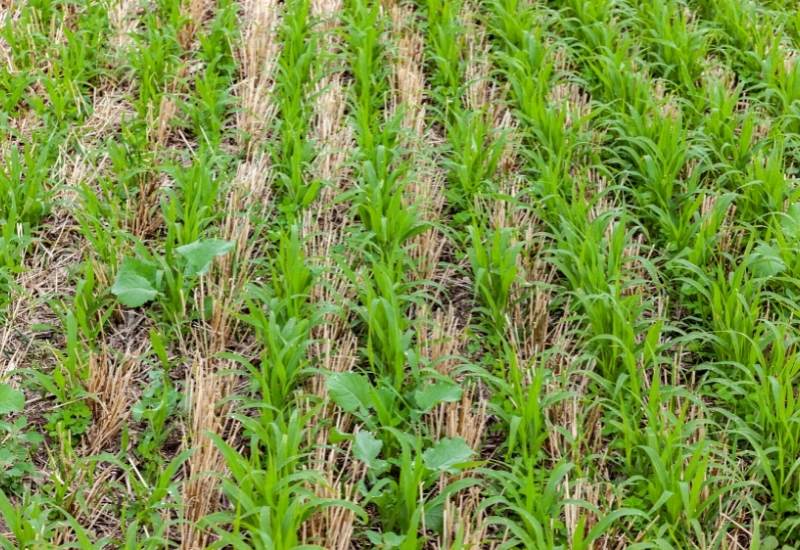
July is a great time to plant cover crops. Cover crops are an old farm practice of sowing plants in the late summer and fall that will overwinter to be tilled under in the spring.
Cover crops are not just for large farm fields, and in your garden, they will prevent erosion, add organic matter, build soil fertility, fix nitrogen, feed pollinators and earthworms, and choke out weeds. Some popular cover crops include:
8 Flower To Plant And Grow In July
What about the flower garden? Planting flowers in July is a great way to ensure beautiful blossoms for as long as possible. Many flower seeds require warm temperatures for successful germination, making July a perfect month to direct sow them in your garden.
Here are some stunning perennial and biennial flowers to sow and grow in July for adding late-season color to your flower bed.
1. Cosmos

Cosmos are a nice, fast-growing flower. If your location permits, direct-sown cosmos in July will give you blossoms in the fall.
Sow the seeds only a few millimetres deep and thin the seedling so they are spaced 20cm to 25cm (8-10 inches). They can grow quite tall but pinch the tips at 45cm (18inches) to create bushier plants, and consider staking the growing plants as they grow.
They are quite drought resistant and ideal for xeriscaping, but make sure to keep the seeds and seedlings watered in the warm summer weather. The following year, remove and dead flowers to extend the blooming time.
2. Nasturtiums
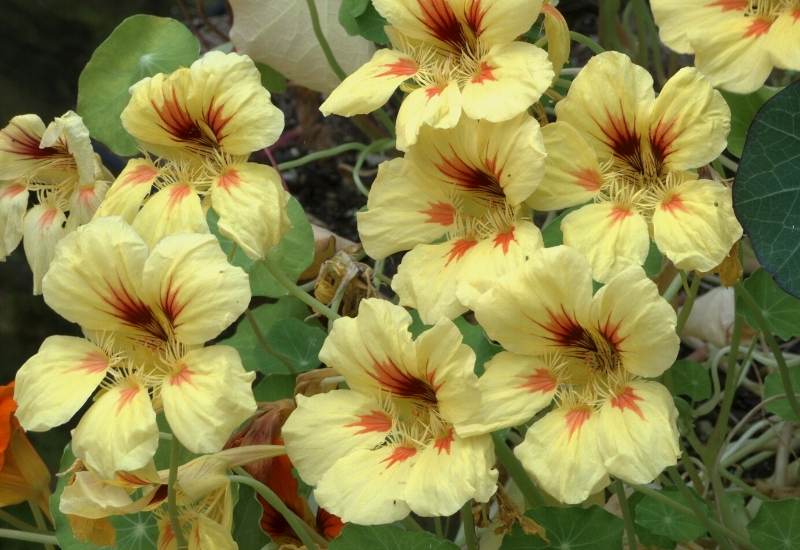
Perhaps these flowers are better listed with the vegetables because when direct sown in July, these beautiful flowers will be ready to eat in September.
Nasturtiums do not germinate well if the soil is warm or if there is too much light, so consider starting them indoors in the dark and transplanting them into your garden.
The do well in poor soils, and they are a very good companion plant, making Nasturtiums a beneficial addition to your July garden.
3. Pansies
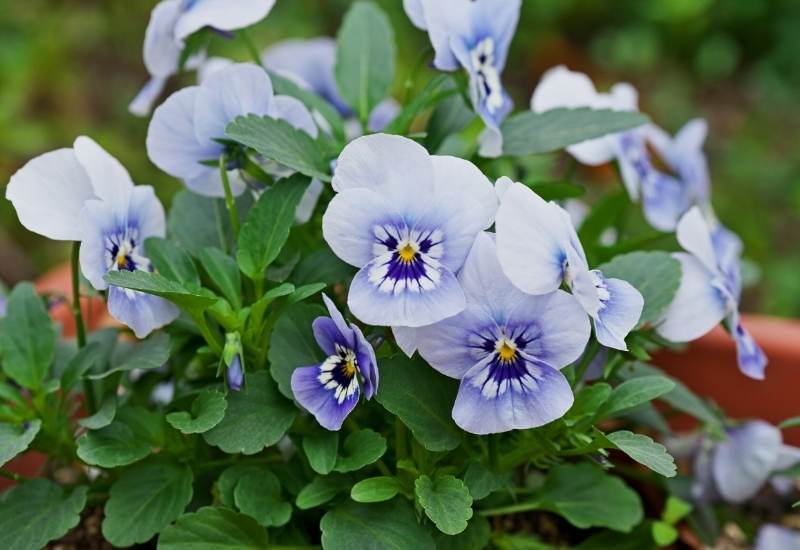
If you have a mild climate, you can sow pansy seeds into your garden in July to get blossoms into the winter.
These cute little flowers are also edible. They are usually direct sown in the autumn to make the most of cool soils, but they can do well in July with proper attention to their growth.
They also start very well indoors for transplanting, since they prefer cool and dark like nasturtiums to germinate and then thrive on in the warm sun of July.
Sow the small seeds 5mm (¼ inch) deep and keep them dark and don’t forget to water them.
4. Biennials
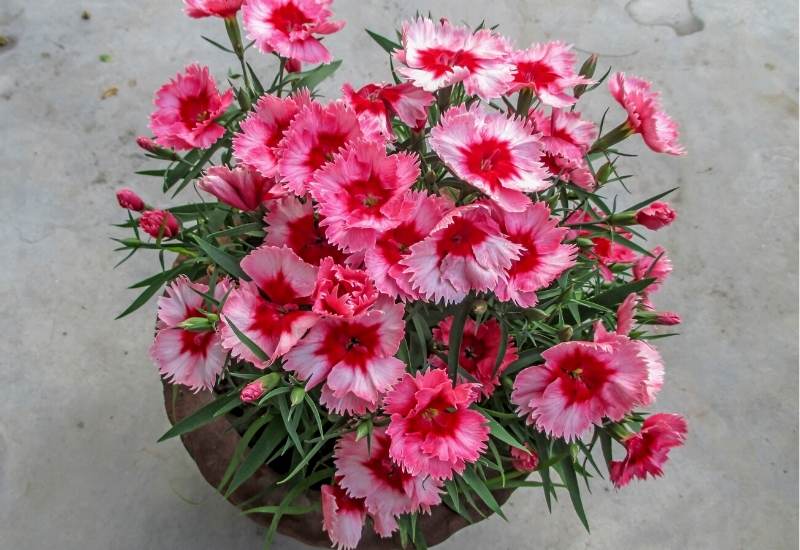
July is a great time to plant biennial flowers in your garden. They will use the warm summer and fall to grow and establish, and they will burst forth in beautiful blossoms the following year. Some good biennials to plant in July are English daisies, Sweet William, hollyhocks, and foxglove.
Follow the instructions on the seed packet for the variety you choose for best germination results.
5. Hostas

Hostas are a very hardy perennial that can be planted in July, though they will not bloom until the following year. July is also a good time to divide your hostas and spread them out.
Dig up the entire plant and then separate or cut the root base. Plant the cuttings in their new desired location and keep them watered so they don’t dry out.
Hostas are shade-tolerant, but exposure to some sunlight, especially in the mornings is ideal.
6. Iris

July is also the time to divide your bearded iris to increase the size of your bed for next year. To separate your irises, dig up the entire clump and pull apart each rhizome with your hands. Replant the divided plants where ever you like.
7. Propagating Geraniums
Geraniums can be propagated very easily from cuttings. July is a good month to take cuttings as the plant should be at the peak of its growth. It might be necessary to move the new cuttings indoors as they establish.
Take a cutting that is green and about 4 to 6 inches long. Remove any lower leaves and stems and stand it in a small glass of water or directly into a plant pot filled with potting soil.
When the cutting has established roots and is strong, it can be transplanted into your garden.
8. Marigolds

Depending on the length of your season, marigolds might be a good choice for your garden as they will stay strong until killed by a hard frost.
Plant your marigolds in well drained soil and avoid overcrowding them as they are susceptible to damping off. Consider starting them from seeds indoor according to the packet instructions, or buy potted plants from the nursery for instant colour in your garden. Make sure to water well in the heat of July.
Conclusion
As the summer gets off and running, so should our gardens. July is a perfect time to start new seeds to make the most of the summer heat. Even in cold, short-season climates, July marks the middle of the growing season and instead of thinking of our gardens as almost done, we need to think they are just getting started and sow seeds to extend our harvest and make the most of the growing season.

Written By
Amber Noyes
Amber Noyes was born and raised in a suburban California town, San Mateo. She holds a master’s degree in horticulture from the University of California as well as a BS in Biology from the University of San Francisco. With experience working on an organic farm, water conservation research, farmers’ markets, and plant nursery, she understands what makes plants thrive and how we can better understand the connection between microclimate and plant health. When she’s not on the land, Amber loves informing people of new ideas/things related to gardening, especially organic gardening, houseplants, and growing plants in a small space.

